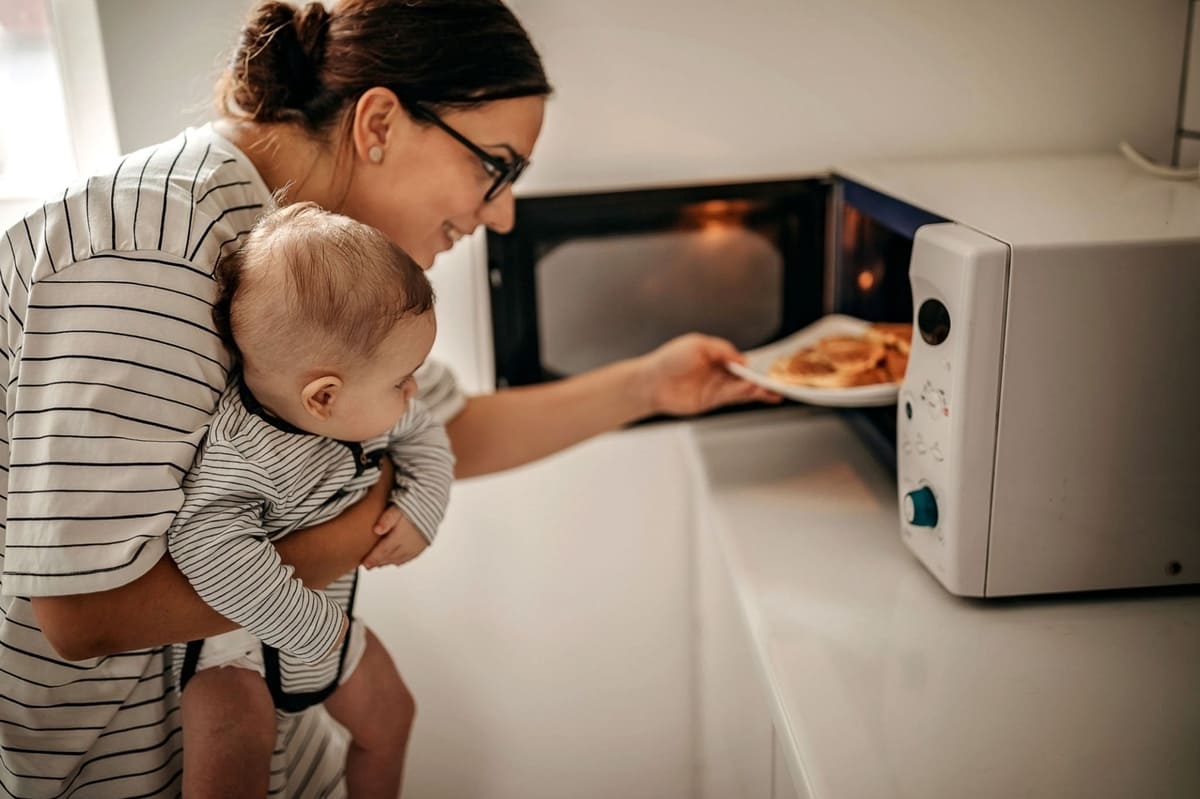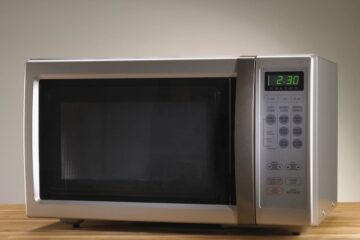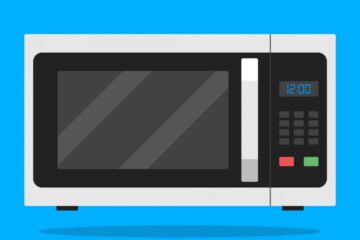Microwaving food has become a common practice in households worldwide. It’s convenient, quick, and saves us time and effort in the kitchen. However, there is still some confusion and misinformation about which containers can be used safely in a microwave. One such material is aluminum, which is often used in takeout containers. So, can you microwave aluminum takeout containers? In this article, we’ll explore the dangers of microwaving aluminum and identify safe and eco-friendly alternatives for food packaging.
Can You Microwave Aluminum Takeout Containers?
Yes, you can microwave aluminum takeout containers, but it is important to do so safely and with caution. While some people may be hesitant to microwave aluminum containers due to concerns about explosions or fires, these risks are relatively low and can be avoided by following proper guidelines.
What Happens When You Microwave Aluminum Containers?
Microwaves work by creating electromagnetic waves that agitate water molecules in food, causing them to heat up and cook. However, metals like aluminum reflect these waves, causing them to bounce around the container, which can result in sparks, fires, and even explosions. The result is not only dangerous, but it can also damage your microwave and ruin your food.
How aluminum reacts with microwaves?
When you microwave aluminum containers, the electromagnetic waves cause the metal to heat up rapidly. The heat generated by this process is so intense that it can cause the aluminum to melt or even catch fire. Furthermore, the high temperatures can cause the aluminum to leach into the food, potentially exposing you to harmful chemicals.
Exploring the dangers of using aluminum containers in microwaves
Microwaving aluminum containers can cause a range of health risks and environmental concerns. Some of these dangers include:
Health risks associated with consuming aluminum: Consuming too much aluminum has been linked to health issues like Alzheimer’s disease and other neurodegenerative disorders. While a single exposure to aluminum may not cause harm, frequent use of aluminum containers for microwaving can lead to excessive exposure over time.
Health risks associated with microwaving aluminum: Microwaving aluminum containers can cause the metal to leach into your food. Aluminum exposure has been linked to liver, kidney, and bone problems, as well as anemia and nerve damage.
Environmental concerns with aluminum use: Aluminum is not biodegradable and can take hundreds of years to decompose. Improper disposal of aluminum containers can lead to environmental pollution and harm to wildlife.
Are Aluminum Takeout Containers Safe to Microwave?
While aluminum containers can be used in a microwave, it’s essential to understand the guidelines and limitations. The FDA has issued guidelines for the safe use of aluminum containers in a microwave, which include:
FDA guidelines on microwave use with aluminum containers: The FDA states that aluminum foil is safe to use in a microwave as long as it is not crumpled or touching the sides of the microwave. However, they do not recommend using aluminum containers for long-term storage or heating foods for an extended period.
The role of the container’s shape and size: The shape and size of the container can also affect its safety in a microwave. Small, flat pieces of aluminum may be more prone to overheating and causing fires, while larger containers may be less likely to heat up as quickly.
Identifying safe and unsafe aluminum containers for microwaving: Not all aluminum containers are created equal. Some containers may be labeled as microwave-safe, but it’s important to read the label carefully to ensure that they meet FDA guidelines.
Risks Associated with Microwaving Aluminum Takeout Containers
The risks associated with microwaving aluminum containers go beyond the potential for explosions and fires. Here are some of the health risks and environmental concerns to consider:
Health risks associated with microwaving aluminum: When aluminum containers are microwaved, they can release aluminum particles into the food. These particles can be ingested and potentially cause harm to the body. While the amount of aluminum that leaches into food during microwaving is generally considered safe by the FDA, long-term exposure to high levels of aluminum can be harmful to human health.
Environmental concerns with aluminum use: In addition to the health risks, the production and disposal of aluminum can have negative impacts on the environment. The mining and processing of aluminum requires significant energy and resources, contributing to greenhouse gas emissions and other environmental concerns. Additionally, aluminum containers are often used only once before being thrown away, contributing to the issue of waste and pollution.
While the risks associated with microwaving aluminum containers may seem concerning, it is important to note that the FDA has deemed aluminum containers safe for microwave use when used properly.
However, to minimize any potential risks, it is important to follow proper techniques when using aluminum containers in the microwave. Additionally, it may be wise to consider alternative food packaging options that are safe and environmentally friendly.
Alternatives to Microwaving Aluminum Takeout Containers
If you are concerned about the potential risks associated with microwaving aluminum containers, there are a variety of safe and environmentally friendly alternatives to consider. Here are some options to explore:
Safe and environmentally friendly alternatives to aluminum containers: There are a variety of food packaging materials that are safe to use in the microwave and are better for the environment than aluminum. These include glass containers, silicone containers, and certain types of plastic containers that are labeled as microwave safe. These materials are generally more durable than aluminum and can be reused multiple times.
Reusable and biodegradable food packaging options: If you are looking for an even more eco-friendly option, there are a variety of reusable and biodegradable food packaging options available. These include beeswax wraps, reusable silicone bags, and compostable containers made from materials like bamboo or paper. While these options may be more expensive than traditional takeout containers, they are a great way to reduce waste and minimize your environmental impact.
How to Use Aluminum Containers Safely in Microwaves?
If you choose to use aluminum containers in the microwave, it is important to do so safely to minimize any potential risks. Here are some tips for safe and effective use of aluminum containers in the microwave:
Proper techniques for microwaving food in aluminum containers: To minimize the risk of aluminum particles leaching into your food, it is important to use aluminum containers only for short periods of time in the microwave. Avoid using aluminum containers to cook high-acid foods like tomato sauce, as the acid can cause more aluminum to leach into the food. Instead, use aluminum containers to reheat food or to cook foods that are low in acid.
Avoiding potential health risks associated with aluminum containers: To minimize your exposure to potential health risks associated with aluminum containers, it is important to use them only as directed. Do not use aluminum containers that are dented or damaged, as this can increase the risk of aluminum leaching into your food. Additionally, do not use aluminum containers in the microwave for extended periods of time or at high temperatures.
The Best Aluminum Containers for Microwaving
When it comes to choosing the best aluminum containers for microwaving, there are a few characteristics to look for. First and foremost, make sure the container is labeled as microwave-safe. This will ensure that it is specifically designed to withstand the high temperatures and other conditions associated with microwaving.
Additionally, it is important to choose a container that is the right size and shape for your food. A container that is too small or too large can affect the way your food cooks and may even cause spills or splatters in the microwave. Look for containers that are the appropriate size and shape for the types of foods you typically microwave.
Finally, consider the thickness of the container. Thicker containers are generally better at distributing heat evenly, which can help ensure that your food cooks evenly and thoroughly. However, keep in mind that thicker containers may also take longer to heat up, so you may need to adjust your cooking time accordingly.
Based on these characteristics, here are some recommendations for safe and effective use of aluminum containers in microwaves:
- Reynolds Wrap Aluminum Foil Reynolds: Wrap is a trusted brand that offers a wide range of aluminum foil products, including microwave-safe options. Their foil is thick and durable, making it great for cooking a variety of foods in the microwave.
- Hefty EZ Foil Casserole Pans: These casserole pans from Hefty are perfect for heating up larger meals in the microwave. They are made from heavy-duty aluminum and are designed to be used in both the microwave and the oven.
- Pactogo Aluminum Take-Out Pans: If you’re looking for an aluminum container that is both versatile and affordable, the Pactogo take-out pans are a great option. They are available in a variety of sizes and shapes, making them ideal for a wide range of foods and dishes.
How to Dispose of Aluminum Takeout Containers?
Once you’ve finished using your aluminum takeout container, it is important to dispose of it properly. Improper disposal of aluminum containers can harm the environment and even pose a risk to human health. Here are some tips for disposing of aluminum takeout containers safely:
- Recycling Aluminum is a highly recyclable material, so one of the best ways to dispose of aluminum takeout containers is to recycle them. Check with your local recycling program to see if they accept aluminum takeout containers, and be sure to rinse the container thoroughly before placing it in the recycling bin.
- Landfill If you are unable to recycle your aluminum container, the next best option is to dispose of it in the landfill. However, keep in mind that aluminum takes a long time to break down in the environment, so it is important to minimize the amount of aluminum waste you generate.
- Reuse Another option for disposing of aluminum takeout containers is to reuse them. These containers can be great for storing leftovers or transporting food to potlucks or other events. Just be sure to clean them thoroughly before each use.
Conclusion
In conclusion, while aluminum takeout containers can be convenient for transporting and reheating food, they are not always safe to use in the microwave. When microwaved, aluminum can react with the food and cause a variety of health and safety concerns. However, by choosing the right containers, using proper techniques, and disposing of them properly, you can safely and effectively use aluminum containers in the microwave.



